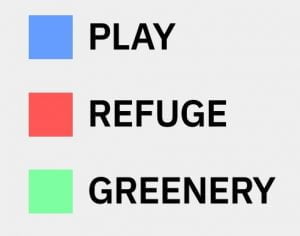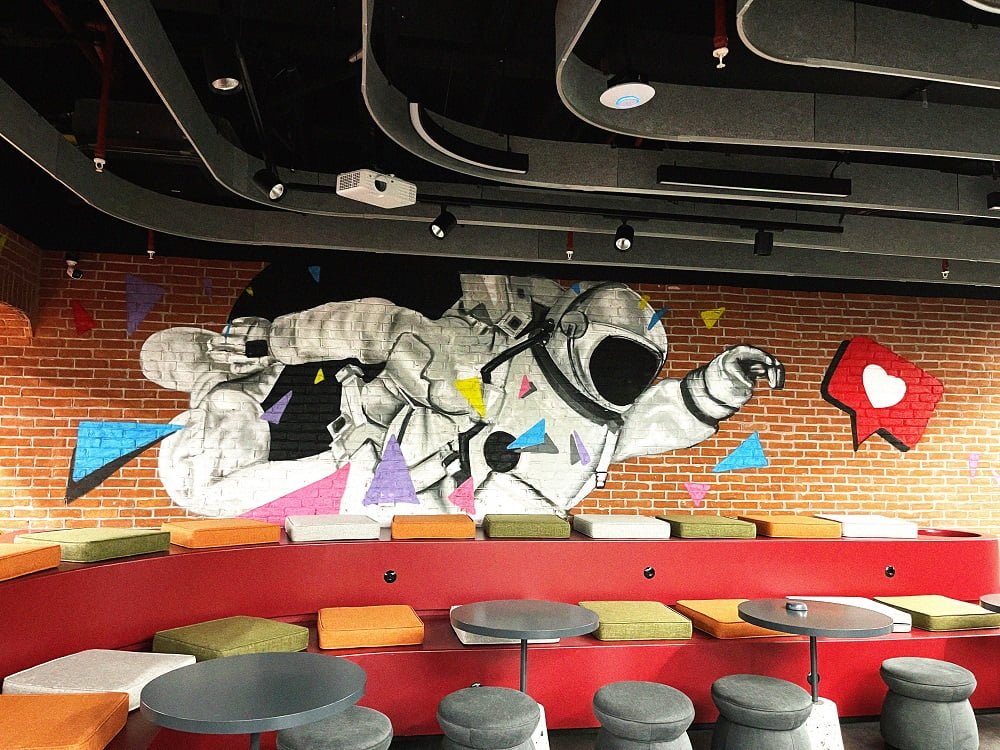By the team at SOUR, a sustainable and inclusive design and architecture studio.
As we are trying to create a more equitable environment, actively take our time to rethink existing processes and systems, and respond in more cohesive and collaborative ways to issues we face today, it is of great importance to not isolate our challenges. When we design new buildings, not only should they go beyond the expectations of contemporary sustainable measurements, but also they should be accessible to all. Universally designed products in their way must incorporate thoughts and plans around recycled materials.
Sustainable and inclusive design are interconnected in the projects of SOUR, an international architecture and design studio with a mission to solve social and urban problems. By designing WITH, NOT FOR, we can ensure that all voices are heard and the end user becomes an active design partner in the design process which ultimately contributes to a more sustainable and durable outcome.
In their latest Journal Issue 04, a selection of their most recent co-created projects are included, ranging from a variety of typologies: from a play-inspired office interior, to the first inclusive deodorant, and from a family kit inspired by the needs of parents and children to a service design project for New Jersey’s Department of Labor. The frequent publishing of research and collaborations is in line with the studio’s mission to actively educate the end user and communicate sustainable developments to clients, as well as working with local communities, and empowering designers to think about alternatives to the existing design processes.
You can read more about SOUR on their website sour.studio, and find the Journal Issue 04 under the research tab on their website or through this link. To give you a piece of the cake, you can read the introduction of this Journal below.

Credit: SOUR

Designing With, Not For: Aiming for Sustainable and Inclusive Design
“We are drowning in information while starving for wisdom. The world henceforth will be run by synthesizers, people able to put together the right information at the right time, think critically about it, and make important choices wisely.”
This is a quote from E.O. Wilson, a famed biologist who has been called the “father of biodiversity”. He championed the idea that nature is not simply a cutthroat, survival of the fittest, gladiator-style arena, but instead a fundamentally collaborative endeavor – one characterized by cooperation and teamwork.
The same is true of design and innovation. And these “synthesizers” Wilson speaks of can only affect change if their solutions are based on a “with, not for” mentality. This means we must break down traditional ivory tower, white-male-dominated industries and build up a system in which a diverse array of voices and ideas can put together the right information and create solutions that work for all, not just for some.
Replacing this trickle-down, center-out design mindset will be no easy task, but it can be done. It will involve working with communities to gain insights into how certain designs and technologies can be most useful. This will mean cultivating two-way educational environments where user feedback informs innovation and people are given the opportunity to meaningfully integrate new designs into their lives. It will involve a more even distribution of power. It will involve more neural diversity in the design phase – more brain power from different people with different cultural backgrounds and lived experiences. And it also will involve designing from the edges, and including the voices of the marginalized to realize solutions that directly address issues of accessibility and inclusion.

Credit: Wunderman Thompson Argentina

Credit: Degree
If we can achieve these goals, industries across the board will be able to move from simply creating products and services to nurturing a communal sense of ownership. And no industry will be more influential in driving this shift than Tech.
Technology has the power to unite and the power to fracture. We have witnessed the immense leaps forward in fields like medicine and computing, but we have also witnessed various forms of techno-elitism and the echo-chambered dissonance of social media run amok. Technological inequality often mirrors social inequality. Tech deserts are a global problem, where low-income communities often lack the tools to participate in the new digital age.
This is a problem which has been exacerbated by the pandemic; as workplaces and education have shifted online, many of these communities are excluded. Not only are these people put at risk physically by being forced to go to jobs where they could be exposed to a potentially deadly virus, they are also unable to contribute their ideas and insights to a conversation that is increasingly moving into the digital space.
Working to fix this reality starts within tech companies themselves. It is an industry that for so long has been an all-boys club, and this needs to change. And it goes beyond simply hiring diversity trainers to run mandatory training programs, a practice that has been deemed largely ineffective.
Hiring a diverse group of people within a company has proven benefits. A study conducted by the Harvard Business Review found that employees in diverse workplaces were 45% more likely to report higher increases in their company’s market shares over the last year and 70% more likely to report that their company had captured a new market. The study also found that “when at least one member of a team has traits in common with the end user, the entire team better understands that user”. This cuts to the core of the “with, not for” concept, and all tech companies would be wise to incorporate it into their business models.
There is another quote by E.O. Wilson that goes like this: “The real problem of humanity is the following: we have paleolithic emotions; medieval institutions; and god-like technology.” Designers and innovators across industries can work to solve this problem by helping create a culture of inclusion and diversity that can push institutions from medieval to progressive and foster emotionally rich and nuanced work environments. By doing so, maybe we strongly believe that there is a future where social and technological progress blossom in beautiful, mutually beneficial harmony.


Credit: SOUR


Sources/Stats
Diversity in the workplace 2000-2020
Oxford Economics Global Diversity Report
https://www.weforum.org/agenda/2019/01/company-diversity-fatigue-no-excuse/
https://insights.grcglobalgroup.com/the-history-and-growth-of-the-diversity-equity-and-inclusion-profession/
https://advisorsmith.com/data/most-diverse-industries-in-the-u-s/
https://uxplanet.org/design-should-be-for-people-not-for-designers-751ff987e9c2
https://www.inclusionintech.com/introduction/
More Stats:
https://www.cio.com/article/201905/women-in-tech-statistics-the-hard-truths-of-an-uphill-battle.html
https://www.quantumworkplace.com/future-of-work/diversity-and-inclusion-statistics
https://builtin.com/diversity-inclusion/diversity-in-the-workplace-statistics
https://whattobecome.com/blog/diversity-in-the-workplace-statistics/
Diverse companies:
https://www.refinitiv.com/en/sustainable-finance/diversity-and-inclusion-top-100
https://www.thestreet.com/personal-finance/most-diverse-inclusive-companies-in-the-world


